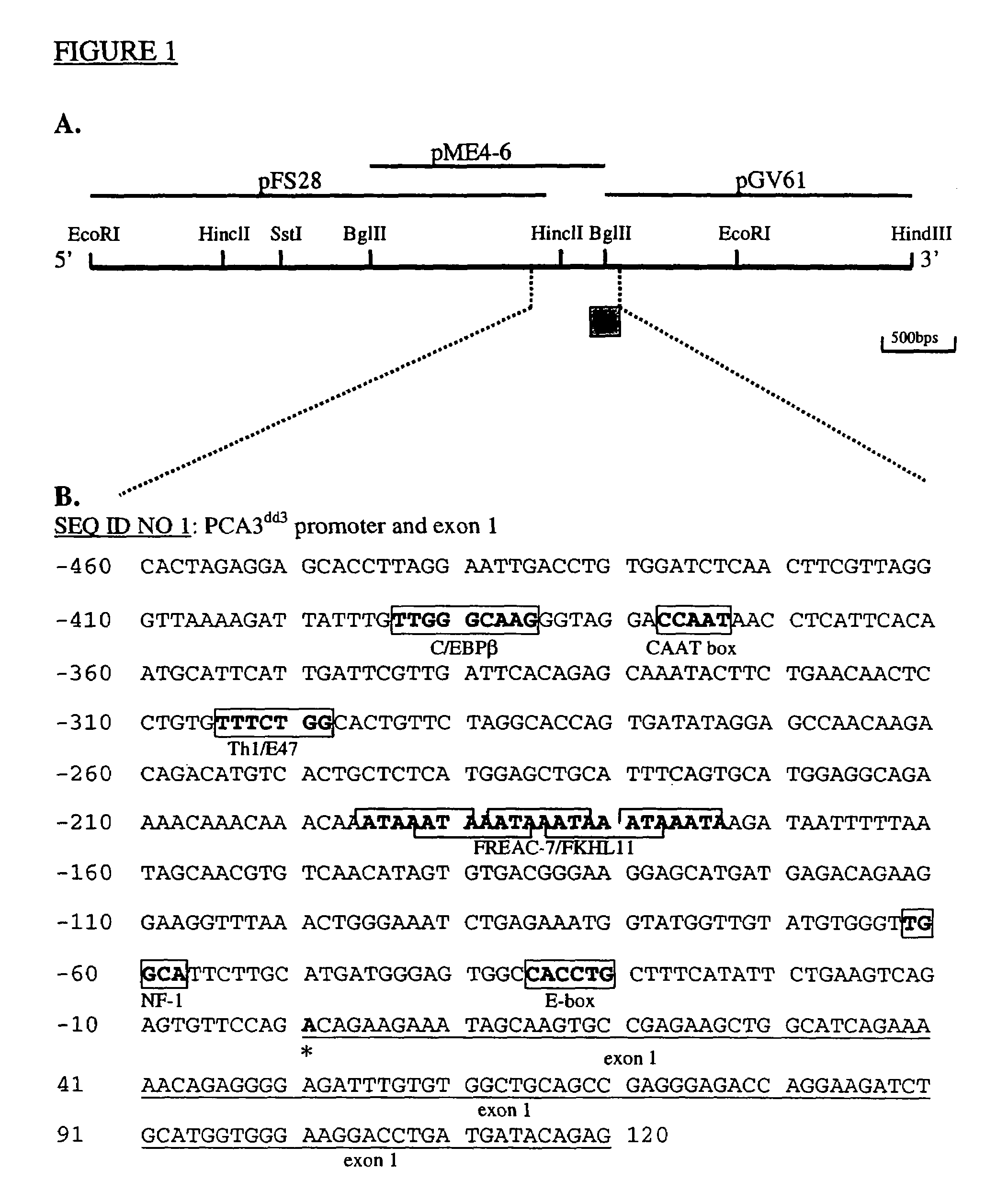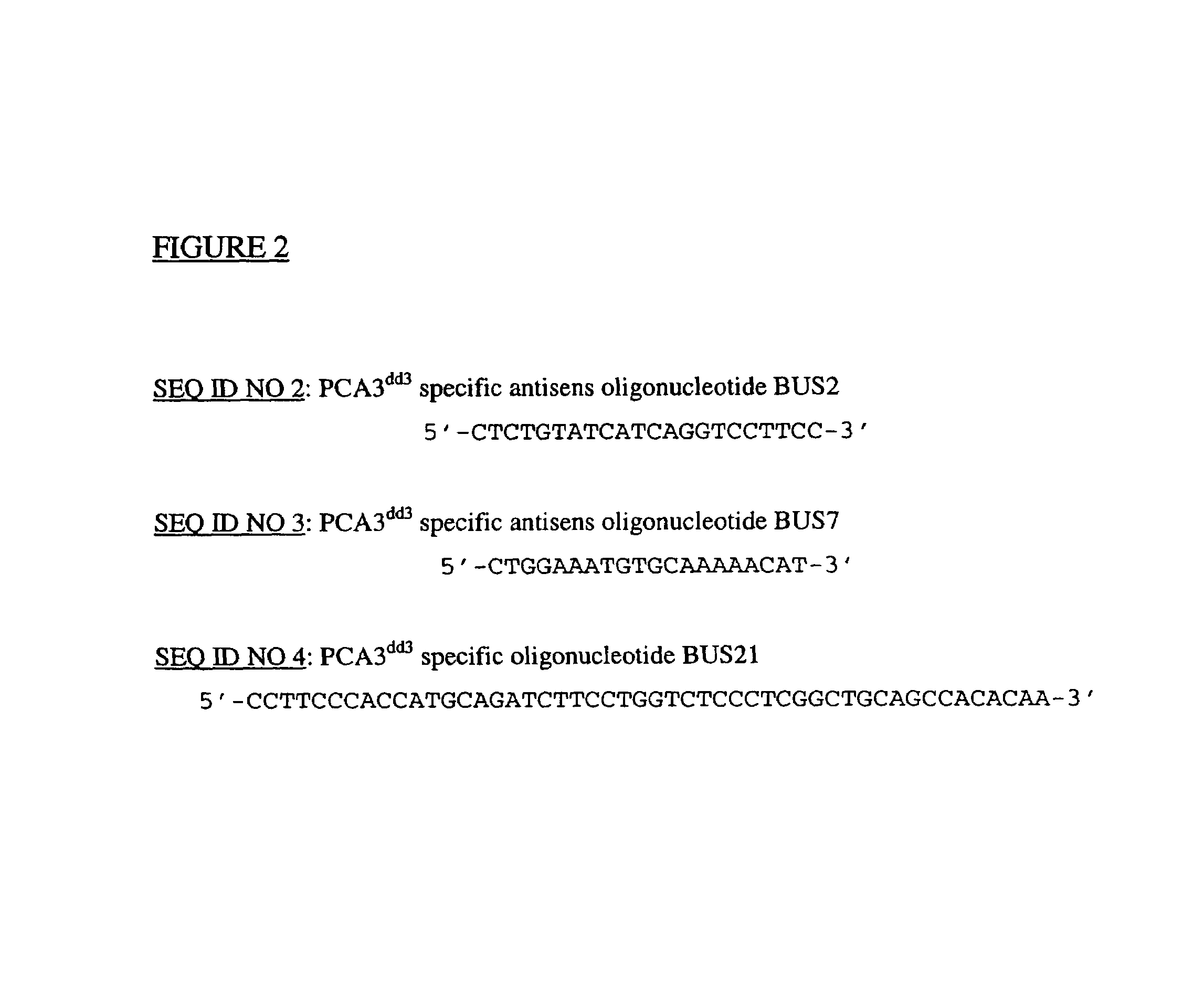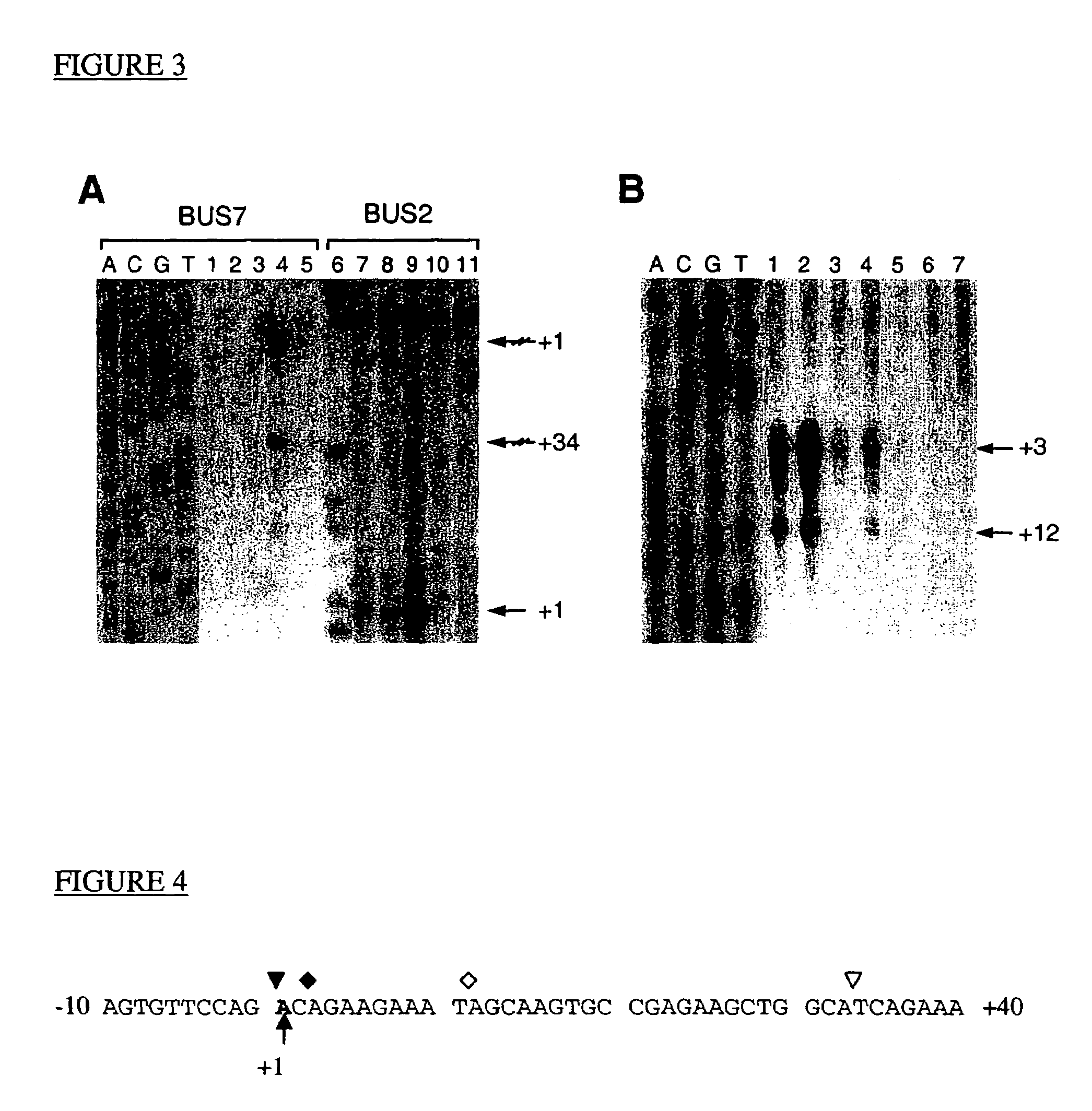Nucleic acid molecules comprising the promoter for PCA3, and uses thereof
a technology of nucleic acid molecules and promoters, applied in the field of prostate cancer, can solve the problems of ineffective treatment for patients with advanced and/or hormone-insensitive prostate cancer, and the limited use of drugs with considerable toxicities
- Summary
- Abstract
- Description
- Claims
- Application Information
AI Technical Summary
Benefits of technology
Problems solved by technology
Method used
Image
Examples
example 1
Isolation and Sequence Analysis of PCA3dd3 Promoter Clones
[0091]Genomic clones lambdaFIX-ME3, -ME4 and -IH1, containing the 5′ end of the human PCA3dd3 cDNA were obtained previously (Bussemakers, PCT / CA98 / 00346 1998; and Bussemakers et al., Cancer Res. 1999a). Lambda phage DNA was endonuclease digested and subcloned in plasmid vectors pGEM-3Zf(+) or pT2. Double stranded plasmid DNA was isolated by standard procedures, and sequenced using the Thermo Sequenase cycle sequencing kit (Amersham) and Texas Red labeled universal primers. Sequencing products were separated and analyzed using the Vistra DNA Sequencer 725.
[0092]In FIG. 1A, a restriction map is shown of the resulting clones pFS28, pGV61 and pME4.6, containing PCA3dd3 exon 1 and its 5′-flanking sequences. The nucleotide sequence of the 5′-flanking region was determined (FIG. 1B) and is deposited in the GenBank database under GenBank Accession Number AF279290. Comparison of the PCA3dd3 5′-flanking nucleotide sequence with sequenc...
example 2
Sequences of the Oligonucleotides Used in the Determination of the PCA3dd3 Transcription Start Site
[0094]The nucleotide sequences of the specific oligonucleotides used in the determination of the PCA3dd3 transcription start site are shown in FIG. 2 (SEQ ID NO:2 to SEQ ID NO:4). BUS2 (SEQ ID NO:2) and BUS7 (SEQ ID NO:3) sequences are PCA3dd3 specific antisense oligonucleotides used for primer extension analysis. The BUS21 (SEQ ID NO:4) sequence is a PCA3dd3 specific oligonucleotide used for RNase protection assay.
example 3
Determination of the PCA3dd3 Start Site
[0095]The isolated human PCA3dd3 cDNAs were shown to possess different 5′ ends, associated with their different lengths (Bussemakers et al., Cancer Res. 1999a). In order to precisely define the PCA3dd3 transcription start site, primer extension analysis and RNase protection assays, using total RNA from human prostate cancer tissue and normal human liver and lung tissue as a negative control, were performed.
[0096]For the primer extension analysis, PCA3dd3 exon 1 (BUS2) and exon 3 (BUS7)-specific oligonucleotides were used as a primer. The use of the exon 3-specific primer, BUS7, is validated, since exon 2 is present in only a minority of transcripts (dd3-specific antisense oligonucleotides BUS2 (5′-CTCTGTATCATCAGGTCCTTCC-3′(SEQ ID NO:3), position +120 to +99) and BUS7 (5′-CTGGAAATGTGCAAAAACAT-3′(SEQ ID NO:3), position +420 to +401) were [gamma-32P]ATP end-labeled (3000 mCi / mmol, Amersham) and annealed with 20 micrograms of RNA at 30° C. in 30 mi...
PUM
 Login to View More
Login to View More Abstract
Description
Claims
Application Information
 Login to View More
Login to View More - R&D
- Intellectual Property
- Life Sciences
- Materials
- Tech Scout
- Unparalleled Data Quality
- Higher Quality Content
- 60% Fewer Hallucinations
Browse by: Latest US Patents, China's latest patents, Technical Efficacy Thesaurus, Application Domain, Technology Topic, Popular Technical Reports.
© 2025 PatSnap. All rights reserved.Legal|Privacy policy|Modern Slavery Act Transparency Statement|Sitemap|About US| Contact US: help@patsnap.com



